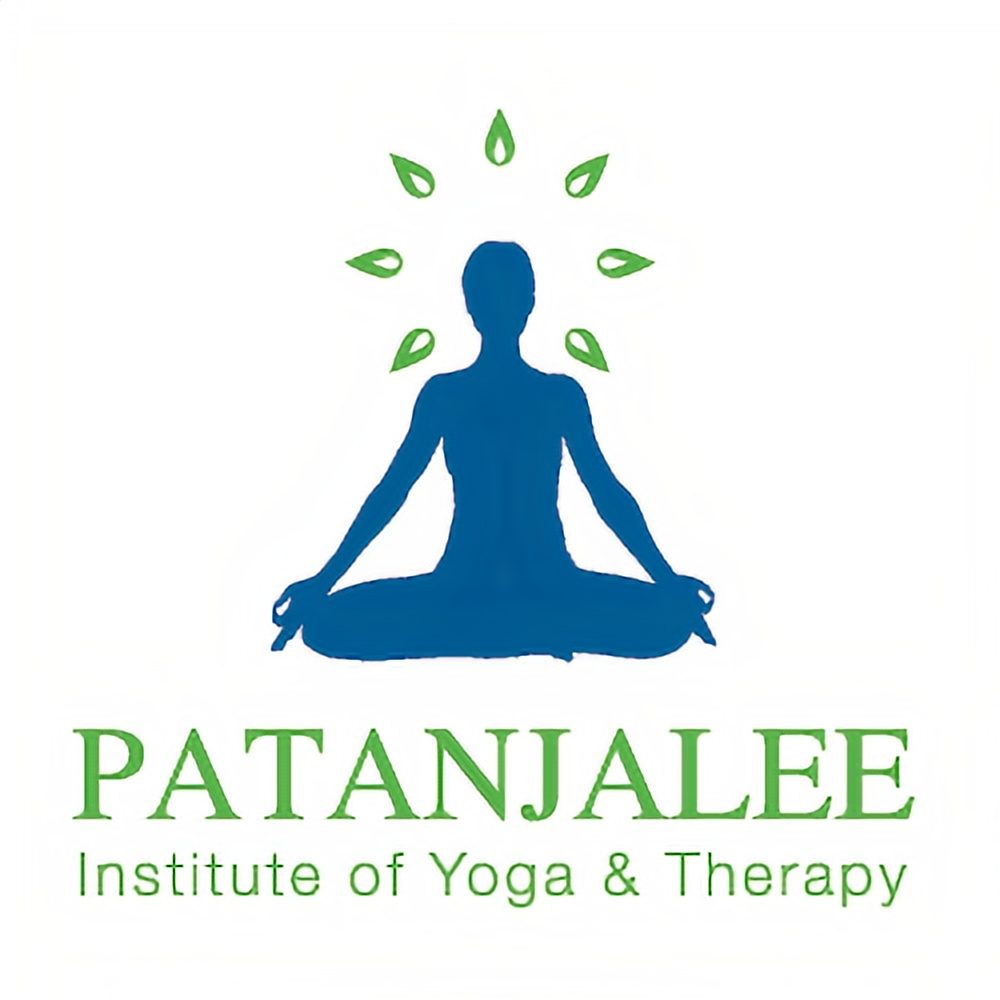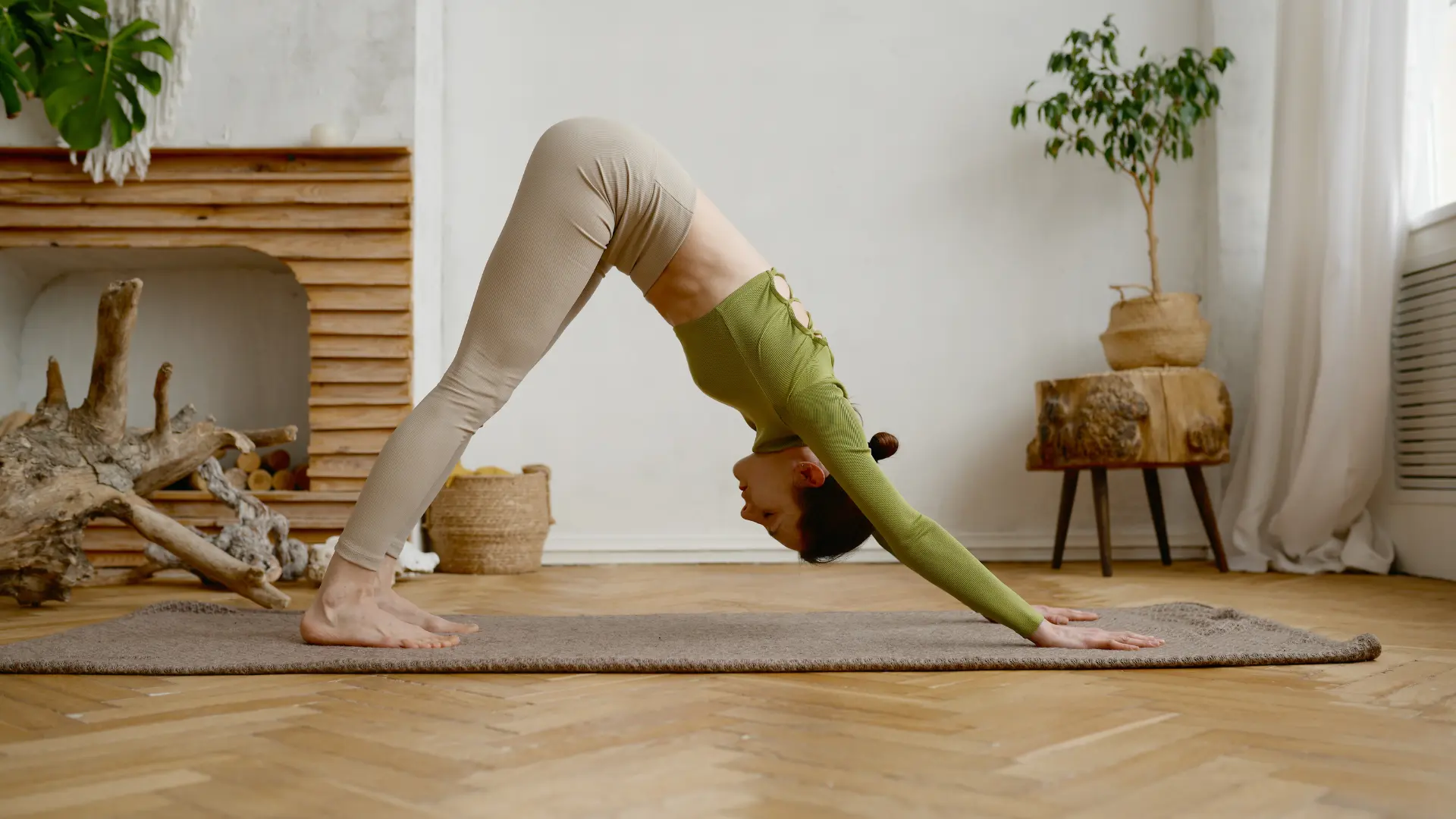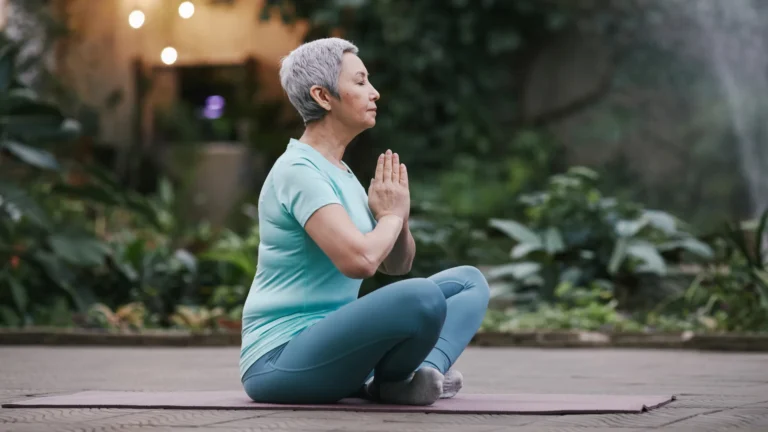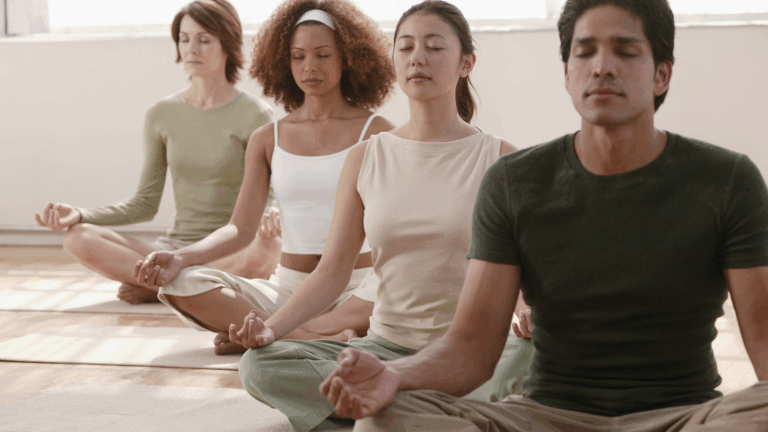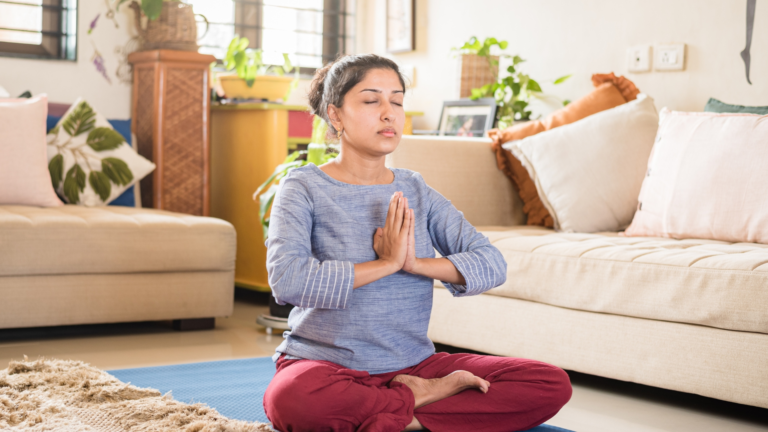Which Yoga Poses Are Essential for Improving Flexibility?
Flexibility is a key component of overall fitness and well-being, offering numerous benefits such as improved posture , reduced risk of injuries, enhanced athletic performance, and increased range of motion. Yoga, with its wide array of poses, is an excellent practice for developing flexibility. In this blog, we will explore several essential yoga poses that can significantly enhance your flexibility when practiced consistently. Let’s dive into the world of yoga and discover how these poses through online yoga classes for flexibility can transform your body and mind.
1. Downward-Facing Dog (Adho Mukha Svanasana)
Steps:
- Start on your hands and knees in a tabletop position.
- Spread your fingers wide and press firmly into the mat with your palms.
- Tuck your toes under and lift your hips towards the ceiling, straightening your legs as much as possible.
- Keep your spine long and your head relaxed between your arms.
- Hold the pose for 1-3 minutes, breathing deeply.
Benefits:
- Stretches the hamstrings, calves, and shoulders.
- Strengthens the arms and legs.
- Relieves tension in the spine and back muscles.
Tips:
- Bend your knees slightly if your hamstrings are tight.
- Focus on lifting your hips rather than getting your heels to the ground.
2. Standing Forward Bend (Uttanasana)
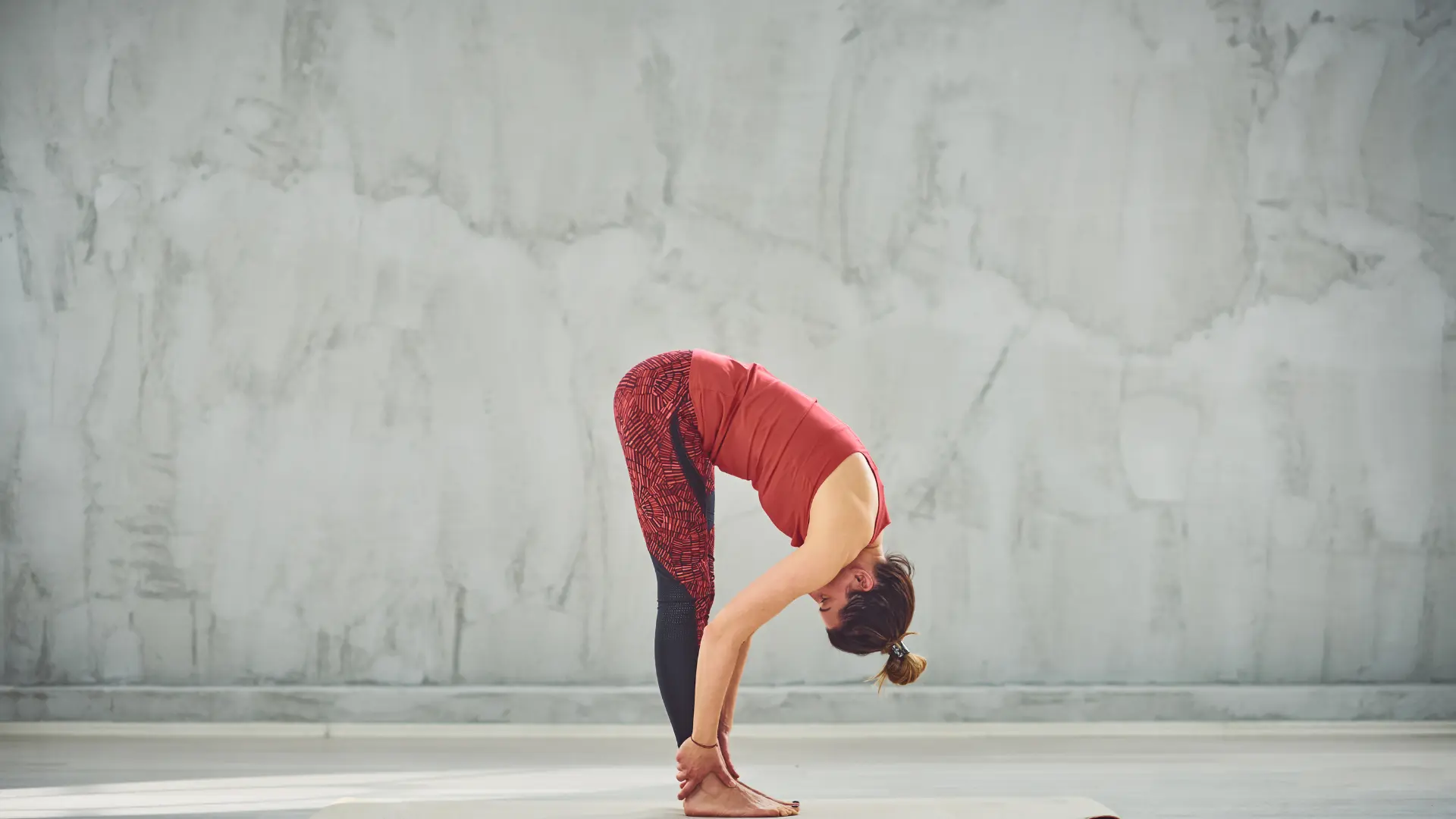
Steps:
- Stand with your feet hip-width apart.
- Inhale deeply and reach your arms overhead.
- Exhale and hinge at your hips, folding forward with a flat back.
- Let your head and neck relax, and reach for your toes or place your hands on the floor.
- Hold the pose for 1-2 minutes, breathing deeply.
Benefits:
- Stretches the hamstrings, calves, and lower back.
- Calms the mind and reduces stress.
- Stimulates the liver and kidneys.
Tips:
- Keep a slight bend in your knees if you feel tightness in your hamstrings.
- Engage your quadriceps to protect your knees.
3. Seated Forward Bend (Paschimottanasana)
 Steps:
Steps:
- Sit on the floor with your legs extended straight in front of you.
- Inhale and lengthen your spine.
- Exhale and hinge at your hips, reaching for your feet or shins.
- Keep your spine long and avoid rounding your back.
- Hold the pose for 1-3 minutes, breathing deeply.
Benefits:
- Stretches the spine, hamstrings, and calves.
- Stimulates the digestive organs.
- Relieves stress and anxiety.
Tips:
- Use a strap around your feet if you cannot reach them comfortably.
- Keep your knees slightly bent if your hamstrings are tight.
4. Cobra Pose (Bhujangasana)

Steps:
- Lie face down on your mat with your legs extended and the tops of your feet on the floor.
- Place your hands under your shoulders, elbows close to your body.
- Inhale and lift your chest off the ground, using your back muscles rather than your hands.
- Keep your elbows slightly bent and your shoulders away from your ears.
- Hold the pose for 30 seconds to 1 minute, breathing deeply.
Benefits:
- Stretches the chest, shoulders, and abdomen.
- Strengthens the spine.
- Improves posture.
Tips:
- Avoid overextending your lower back by keeping your pelvis grounded.
- Engage your legs to support your lower back.
Check out our blog “ Bhujangasana – Cobra Pose | Steps, Benefits, Cautions ” to learn more about Bhujangasana.
5. Pigeon Pose (Eka Pada Rajakapotasana)
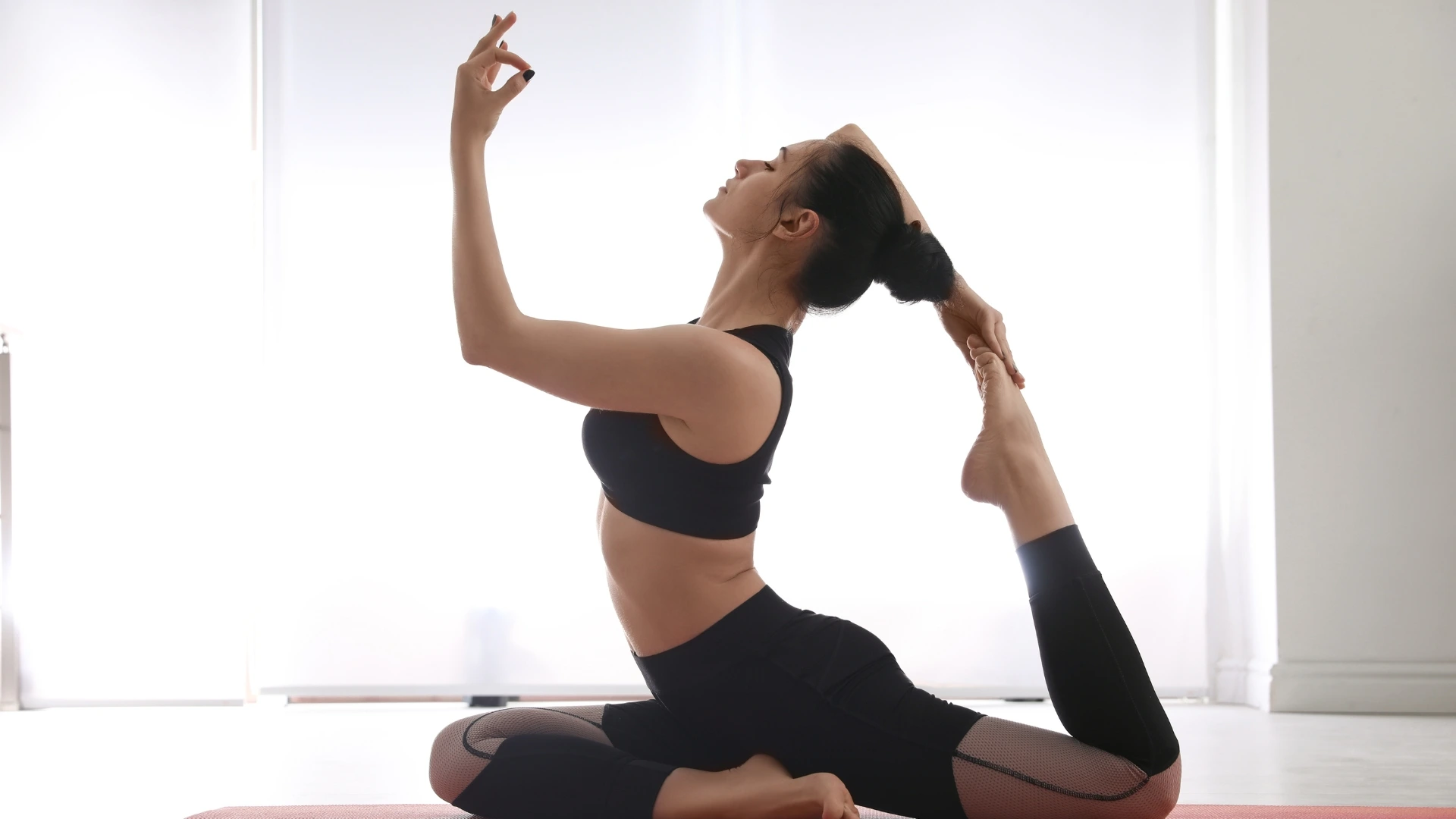
Steps:
- Start in a tabletop position.
- Bring your right knee forward and place it behind your right wrist.
- Extend your left leg straight back, keeping your hips square.
- Inhale and lengthen your spine, then exhale and fold forward over your right leg.
- Hold the pose for 1-3 minutes, breathing deeply, then switch sides.
Benefits:
- Stretches the hip flexors, glutes, and lower back.
- Relieves tension in the hips and thighs.
- Improves hip mobility.
Tips:
- Use a blanket under your hips for support if needed.
- Keep your front foot flexed to protect your knee.
6. Butterfly Pose (Baddha Konasana)

Steps:
- Sit on the floor with your legs extended.
- Bend your knees and bring the soles of your feet together.
- Hold your feet with your hands and gently press your knees towards the floor.
- Inhale and lengthen your spine, then exhale and fold forward, keeping your back straight.
- Hold the pose for 1-3 minutes, breathing deeply.
Benefits:
- Stretches the inner thighs, groin, and knees.
- Improves hip flexibility.
- Stimulates the abdominal organs.
Tips:
- Sit on a folded blanket if your hips are tight.
- Avoid forcing your knees down; let gravity do the work.
7. Cat-Cow Pose (Marjaryasana-Bitilasana)


Steps:
- Start in a tabletop position.
- Inhale and arch your back, lifting your head and tailbone (Cow Pose).
- Exhale and round your spine, tucking your chin and tailbone (Cat Pose).
- Continue to flow between these two poses for 1-2 minutes, coordinating your breath with your movements.
Benefits:
- Increases spinal flexibility.
- Stretches the back, neck, and torso.
- Relieves tension in the spine and improves circulation.
Tips:
- Move slowly and mindfully, focusing on the articulation of each vertebra.
- Synchronize your breath with your movements for a meditative effect.
8. Extended Triangle Pose (Utthita Trikonasana)

Steps:
- Stand with your feet wide apart.
- Turn your right foot out 90 degrees and your left foot slightly in.
- Extend your arms parallel to the floor.
- Inhale and lengthen your spine, then exhale and reach your right hand towards your right shin or the floor.
- Extend your left arm towards the ceiling, keeping your chest open.
- Hold the pose for 1-2 minutes, then switch sides.
Benefits:
- Stretches the legs, hips, and torso.
- Strengthens the legs and core.
- Improves balance and stability.
Tips:
- Use a block under your hand if you cannot reach the floor.
- Keep your chest open and avoid collapsing forward.
9. Child’s Pose (Balasana)
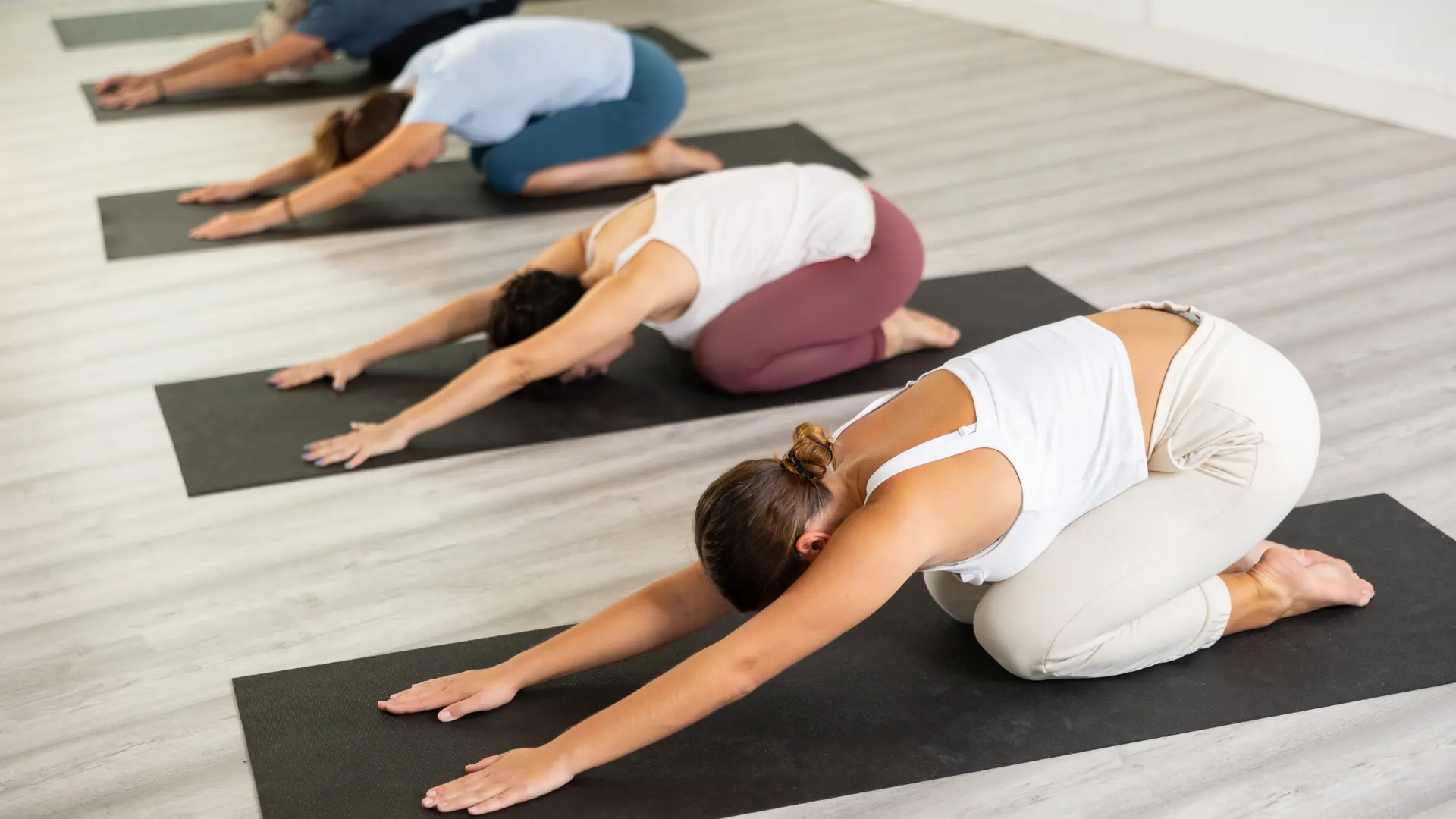
Steps:
- Start on your hands and knees in a tabletop position.
- Bring your big toes together and sit back on your heels.
- Extend your arms forward and rest your forehead on the floor.
- Hold the pose for 1-3 minutes, breathing deeply.
Benefits:
- Stretches the hips, thighs, and ankles.
- Relieves tension in the back, neck, and shoulders.
- Calms the mind and reduces stress.
Tips:
- Place a blanket under your knees for added comfort.
- If your forehead does not reach the floor, rest it on a block or cushion.
10. Bridge Pose (Setu Bandhasana)
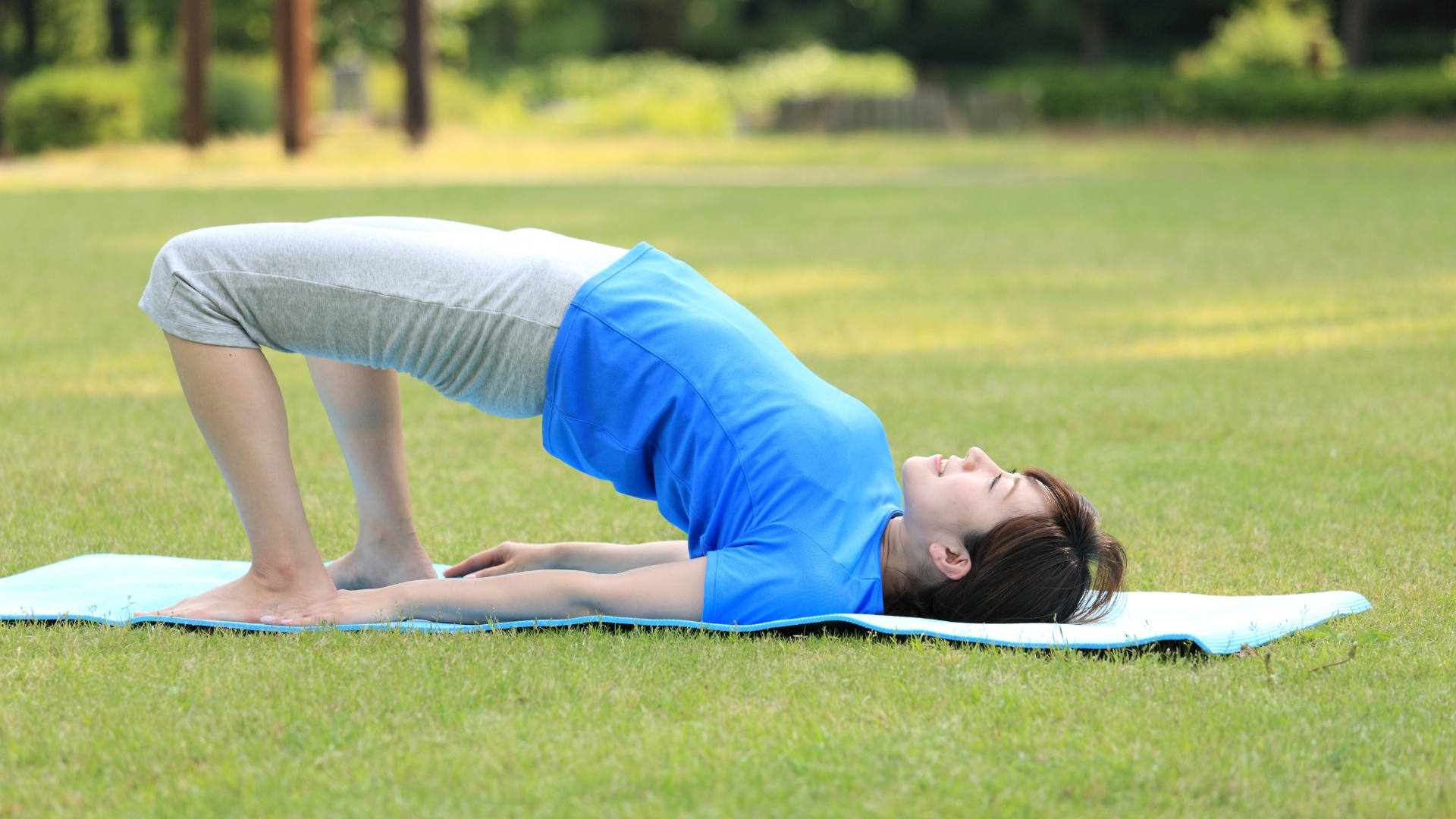
Steps:
- Lie on your back with your knees bent and feet hip-width apart.
- Place your arms by your sides with your palms facing down.
- Inhale and lift your hips towards the ceiling, pressing into your feet and shoulders.
- Clasp your hands under your back and roll your shoulders under.
- Hold the pose for 30 seconds to 1 minute, then release and lower your hips to the floor.
Benefits:
- Stretches the chest, neck, and spine.
- Strengthens the back, glutes, and hamstrings.
- Improves posture and reduces back pain.
Tips:
- Avoid turning your head while in the pose to protect your neck.
- Engage your inner thighs to keep your knees from splaying out.
Conclusion
Incorporating these essential yoga poses into your regular practice through online yoga classes can greatly enhance your flexibility, leading to improved overall well-being. Remember that consistency is key, and it is important to listen to your body and progress at your own pace. Over time, you will notice increased range of motion, reduced muscle tension, and a greater sense of ease in your movements. Whether you are a beginner or an experienced yogi, these poses offer a solid foundation for building flexibility and achieving a balanced, healthy body. So unroll your mat, breathe deeply, and embrace the transformative power of yoga.
